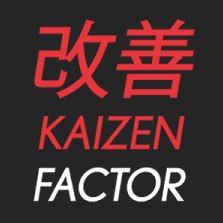My “partner-in-writing” Ryan (Flipside909) earlier welcomed you to Kaizen Factor with a very clear, concise and informative “mission statement”. His original “Lexus, Toyota & Scion and everything in between” line was, at my request, expanded to “Lexus, Toyota & Scion and everything in between and beyond“. Not to infinity in this case, though. With all due respect to Buzz Lightyear, we’re not about to associate with rival Japanese luxury car brands. On the other hand, anything that is loosely associated with Toyota is fair game here, beyond the three brands the carmaker sells in North America.
The old “no man is an island” cliché can very accurately be paraphrased as “no carmaker is an island” as even such traditional archrivals as Ford and General Motors or Mercedes-Benz and BMW find themselves collaborating closely (on 6-speed automatic transaxles and two-mode hybrid powertrains, respectively). Even reputed go-it-alone companies such as Honda aren’t completely immune from occasional outside collaborations, such as the rebadged product exchanges between Honda and Isuzu during the latter half of the 1990s. Although Toyota President Akio Toyoda famously stated at the 2009 Management Briefing Seminars in Traverse City, Michigan that “Toyota is not the kind of company that is good at alliances”, his namesake company’s actions have sometimes belied these words. Toyota owns 51% of Daihatsu and a similar majority stake in Japanese large truck maker Hino. Daihatsu is Toyota’s standard-bearer in Japan’s tiny Kei car class, as well as offering several larger models that, more often than not, are simply rebadged Toyotas. As for Hino, the Japanese maker of medium and heavy duty trucks and buses has historically been an archrival of Isuzu. The recent General Motors meltdown that culminated in bankruptcy, however, led GM to sell off its long-standing investment in Isuzu. Seeking Isuzu’s expertise in smaller, lighter-duty diesels than Hino’s offerings, Toyota then stepped in and acquired a 5.9% stake in Isuzu. And, speaking of General Motors, the long string of outside product exchanges and collaborations between GM and Toyota (including Toyota-engineered vehicles rebadged as Geos, Chevrolets and Pontiacs assembled at the NUMMI plant in California as well as the Chevrolet Cavalier rebadged as a Toyota for the Japanese Domestic Market that was every bit as disastrous as it sounds) may well be the subject of future stories here.
Among the most-anticipated new car launches within the next couple of years is the so-called “Toyobaru coupe”, which was previewed by the Toyota FT-86 concept that debuted at the 2009 Tokyo Motor Show. This entry-level rear-wheel-drive sports coupe engineered by Toyota using Subaru mechanicals is but the most high-profile of several collaborations between the two carmakers, all cemented by Toyota’s 16.7% stake in Subaru. Reminiscent of the GM/Toyota joint ventures is that with France’s PSA Peugeot Citroën which led to the sub-Yaris Toyota Aygo. And if the list of carmakers involved in collaborations with Toyota strikes you as too prosaic, don’t forget that the friendship between Aston Martin chairman Dr. Ulrich Bez and Akio Toyoda when both drove for their respective carmakers at the 24 Hours of the Nürburgring between 2007 and 2009 (and Lexus and Aston Martin even sharing a garage for the 2010 race) led to the jaw-dropping decision for Aston Martin to morph the Toyota/Scion iQ into the Aston Martin Cygnet. Also, ties between Lotus and Toyota go much further back than the 2004 decision to replace the Lotus Elise’s ancient Rover engine with Toyota’s 2ZZ-GE 1.8-liter 4, to recently retired Lotus Director of Vehicle Engineering Roger Becker’s longstanding admiration for Toyota’s reliable high-performance engines and Lotus’ development of the suspension calibrations for the first Toyota MR2 and the Mk. II and Mk. III versions of the Toyota Supra. That story will certainly be told in a future article for Kaizen Factor.

[…] Welcome to Kaizen Factor, Part 2 Archives […]